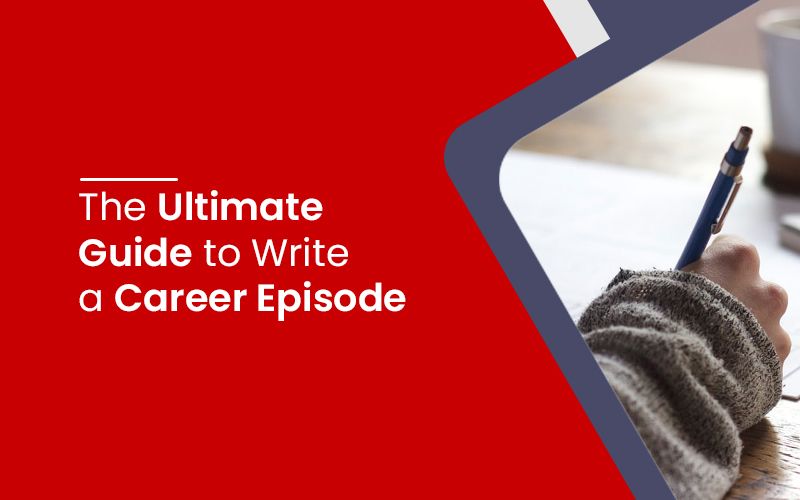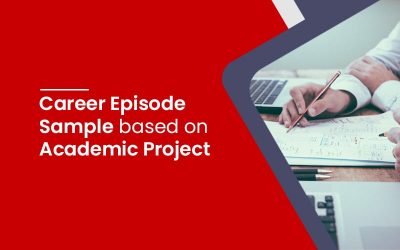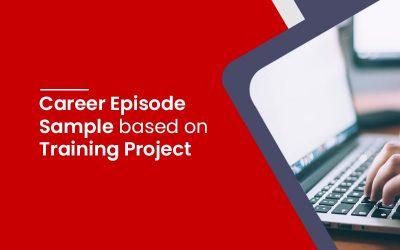The Ultimate Guide to Write a Career Episode

Table of Contents
Are you having trouble preparing your CDR Report?
Don’t know what precisely a Career Episodes stands for? The basic definition of career episode and every do’s and don’ts will be defined here in this blog.
One of the key components of a CDR report is the career episode. The candidates must provide Engineers Australia with three career episodes (EA). The career episode is essential to demonstrate your knowledge, skills, and accomplishments in your engineering field. The career episode report shows many parts of your job and engineering experience. For university projects you completed throughout your term of study, or for the projects you had in your professional working environment for some business, you might write your career episodes. In all situations, it requires the same methods to write a career episode. We have a team of specialists and experienced writers that can offer you the finest career episodes.
It is written to illustrate your engineering education, job experience, and any training related to your profession. Each Career Episode must mention a specific period or aspect of your engineering skills. Furthermore, each Episode should show the application of your engineering skills in the specific field.
Why Do You Need Career Episodes?
Engineers who have no Australian engineering degree must show their skills to the Engineers Australia Institute (EA). They want to ensure that those they have permitted in can work on the labour market in Australia and are not a risk to the economy.
Using a competency demonstration report, EA created a skills evaluation of engineers who wish to relocate to Australia (CDR). The CDR comprises three career episodes that illustrate the engineering skills and know-how of your last year of engineering, internships, or similar program. During this career period, EA may measure the facts on the degree of engineering abilities of the candidate. Thus, a well-drawn-up career episode is an absolute requirement if anybody wants to ensure that their migration to Australia is evaluated favourably by EA.
Career episode Format
- Project Report on which you have worked on or currently working on.
- Academic training or program was undertaken during your Engineering Study Period.
- Job responsibilities that are given to you in your workplace.
You need to write three different Career Episodes for your CDR Report. Each Career Episode has four sections Introduction, Background, Personal Engineering Activity, and at last, its Summary. What to write in this section? Let’s see.
Introduction
This is the first section of the Career Episode. The word count of this section should be approximately 100 words. Here you need to write about
- the name of the project
- when it happened
- where you did it and
- what was your job
Background
This is the next section of the Career episode that is written in about 200-500 words. This section should be able to explain in detail about
- nature of your project
- it’s objectives and
- your involvement in the project.
Personal Engineering Activity
It’s the most crucial part of the Career Episode that contains all the information on what you have done in this project, such as what engineering methods you used to solve the problems, how you managed to work in a team, how you got new ideas. Be Specific about what you did rather than what your team did because it’s a personal competency assessment, not a project assessment.
Summary
Now summarize all the things you have written in the above sections in about 50-100 words. Well, there you go. Follow these things, and there’s no doubt that your Report will be excellent.
Do’s and don’ts for the Career episode
- Your career episode projects should be based on your particular ANZSCO occupation. Each episode’s project should be different from one another and reflect your skills and tactics in solving the problems put in front of you. IT can be your academic or professional year projects where you played a vital role.
- The word limit for the career episode is 1500-2500. Make sure you stick to the limit and avoid unnecessary graphs, images, and descriptions.
- An EA evaluator evaluates your report. No excessive phrases, too much technical terminology, and jargon are needed that may delay and possibly reject your report.
- It should be used for writing career episodes, just Australian English.
- In addition to utilizing active voice, most of the use of the first-person narration, i.e., “I,” must be followed throughout the whole episode.
- The format for writing career episodes should be used. Do not utilize tables and computations that are unneeded. Instead of specific technical data, the description of the actions is required.
- You should focus on your involvement in the project instead of your team members. Write more about your challenges and the techniques utilized to bring the project to completion.
- Follow the career episode format as determined by EA strictly.
- To facilitate simple reference in the Summary Statement, include the correct numbers for each paragraph in the career episode.
- The first paragraph of Career Episode 1 will be numbered as 1.1, 12, 1.3. Paragraphs of Career Episode 2 will be numbered as 2.1, 2.2, 2.3.
- The summary statement must specify the number of paragraphs above.
For more details on writing Career episodes and other CDR report content, explore our site. Learn about CPD, Curriculum Vitae, and Summary Statement to have a proper understanding of the subject matter.
Recent Posts
- Benefits of RPL Writing for Professional Advancement—Seize the Opportunity! July 8, 2024
- Unlocking Your Potential: Benefits of NER Registration for Engineers—Don’t miss out! July 4, 2024
- 8 Advantages of being a Registered NER Engineer April 25, 2024
- Stage 1 Competency Standard for Professional Engineer December 4, 2023
- Secure Your Future: The Most In Demand Jobs for Skilled Migrants to Australia in 2024 November 3, 2023




